Yongnuo YN 50 mm f/1.8
3. Build quality
In the photo below the Yongnuo is positioned next to two Canon instruments: the EF 50 mm f/1.4 USM and the EF 50 mm f/1.8 II.
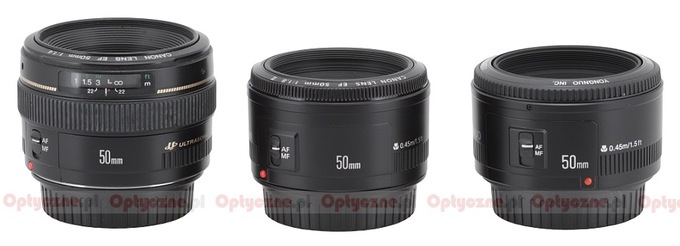 |
Please Support UsIf you enjoy our reviews and articles, and you want us to continue our work please, support our website by donating through PayPal. The funds are going to be used for paying our editorial team, renting servers, and equipping our testing studio; only that way we will be able to continue providing you interesting content for free. |
- - - - - - - - - - - - - - - - - - - - - - - - - - - - - - - - - - - - - - - - - - - - - - - -
In order to show the differences between the Yongnuo and the Canon we made several other shots which you can find below. On the left you see the Canon and on the right – the Yongnuo (and that order is also kept in the rest of the text).
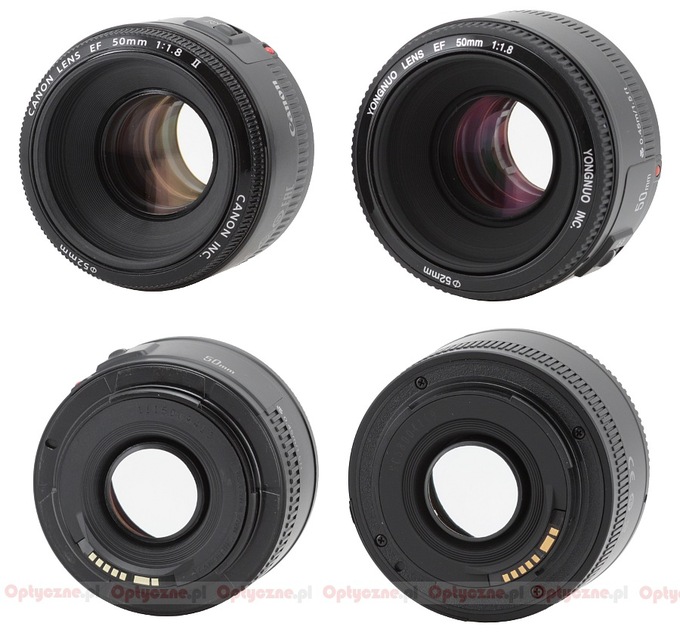 |
One glance and you are sure the photos show several crucial differences. The Yongnuo is bigger, its focusing mechanism mode switch (AF/MF) is positioned differently and its manual focus ring is rubberized. Also Yongnuo’s coatings have a different hue and its mount doesn’t feature the place of production; instead you can see screws allowing you to disassemble the lens.
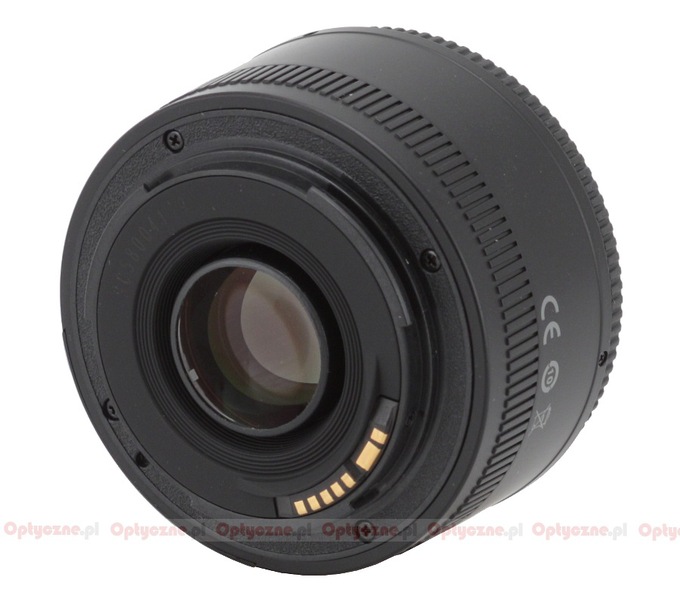 |
The rear element of the tested lens is less than 24 mm in diameter – a value very similar to that of the Canon - the front element is 31 mm in diameter. The focusing is performed by the movements of the whole optical system in the same time so when you pass to the minimum focal length the rear element hides slightly inside the casing.
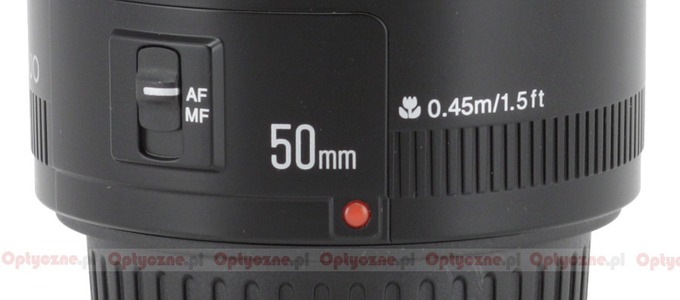 |
Like in the case of the Canon, the front element is hidden inside the tube and surrounded by a filter thread, 52 mm in diameter, which doesn’t rotate.
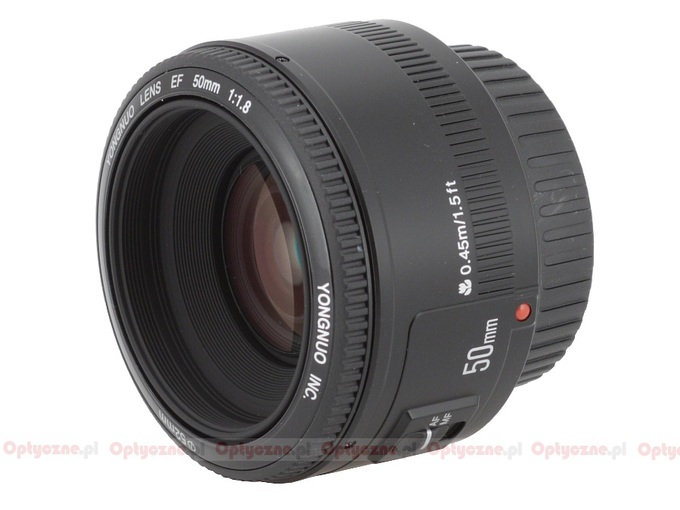 |
Now it’s time for a small autopsy. We proved that the exteriors of the lenses differ and now we are going to find out what’s inside them.
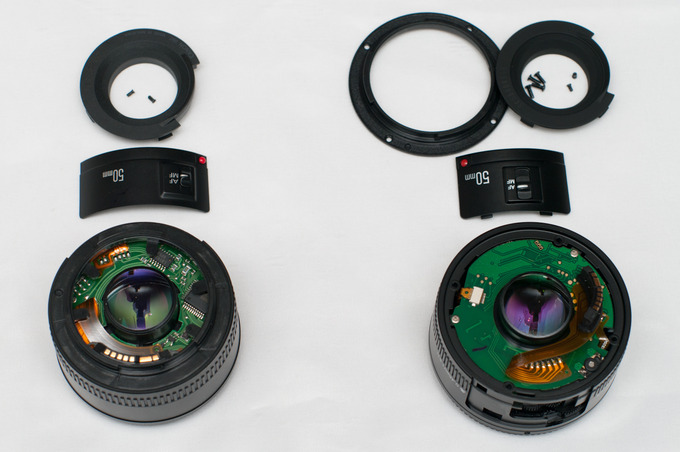 |
The rear casing part of the Canon lens is kept in place by clasps and it is easy to remove – you have to screw off the contacts and push them inside. In the case of the Yongnuo opening the lens is even easier because its mount is kept in pace by four screws.
The printed circuit boards are completely different. A cable ribbon connecting the board with the aperture is soldered in the case of the Canon, which makes any potential repairs harder. The side casing part with focal length marking and autofocus switch is attached using a double-sided tape in case of Canon, and using a snap-on in the case of the Yongnuo. Another point for the Chinese lens as such a solution makes any potential repairs easier.
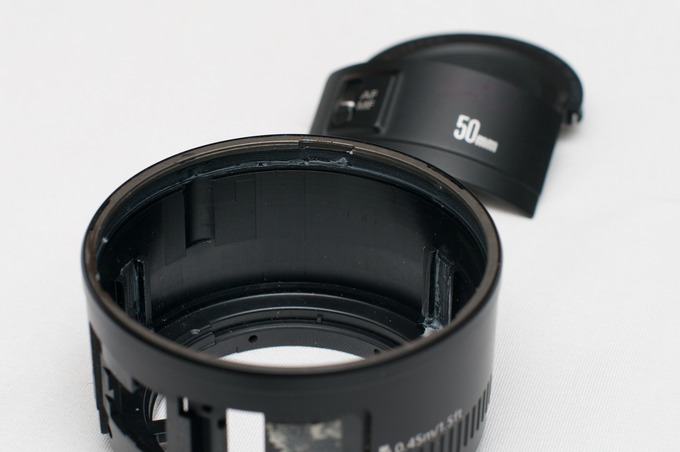 |
On the edge of the Canon lens’s body there are metal washers which make the whole construction stiffer and might prevent breaking when some lateral force is influencing the lens, like, e.g. closing doors. A point for the Canon.
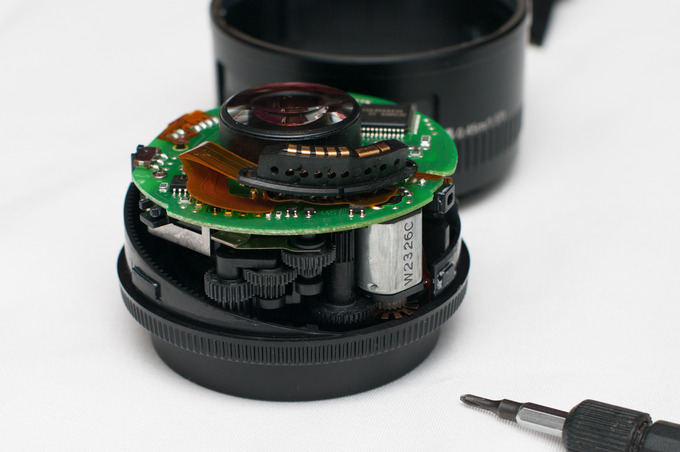 |
The Canon: the printed circuit board, the last group of elements, a set of gears and the mechanics of the aperture are in one module. The elements are pushed into a plastic tube and glued in.
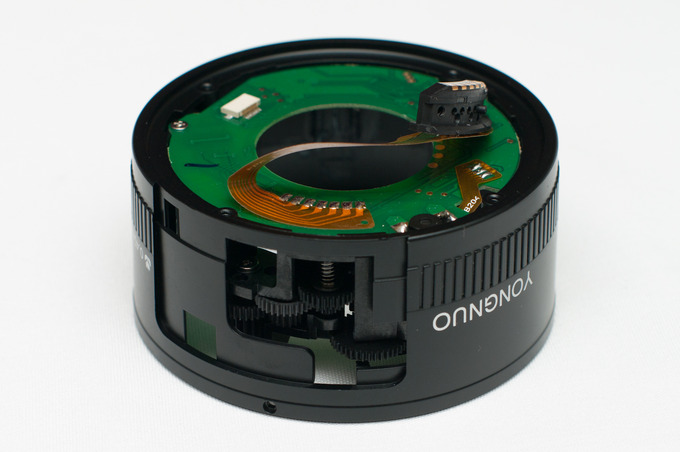 |
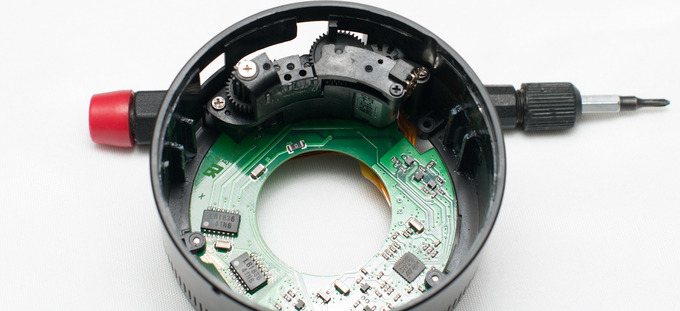 |
The Yongnuo: the printed circuit board and gears are attached to the casing immediately under the AF/MF switch. The gear set is very similar to that of the Canon. The optical encoder is also like the one from the Canon but the Canon features a brass one.
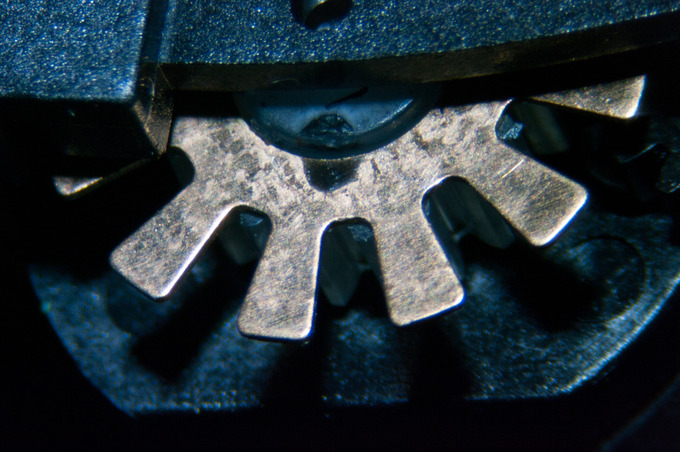 |
The disassembled Canon is a lens owned by our editorial office which once upon a time had a close encounter with the floor. As a result its encoder fell of the gear it was attached to. If your lens ever has autofocus problems you should check it in that direction.
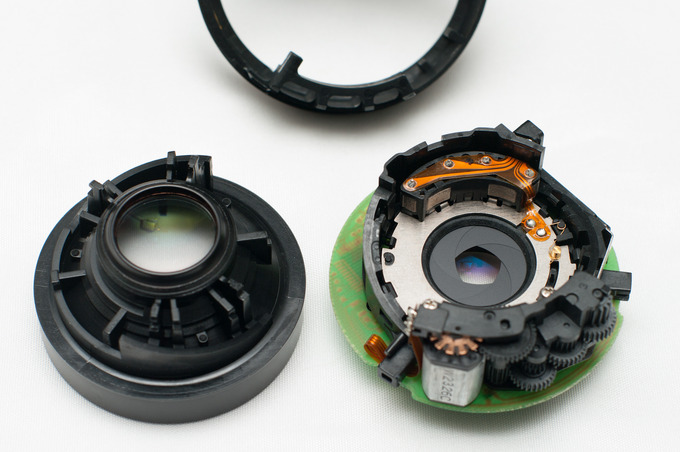 |
After detaching both halves of the optical system you see a five-blade aperture controlled by a linear induction motor. The focusing is performed by a movement of just two plastic socket ferules on cams. It explains why this construction has such a prominent looseness; additionally such a solution is also failure-prone.
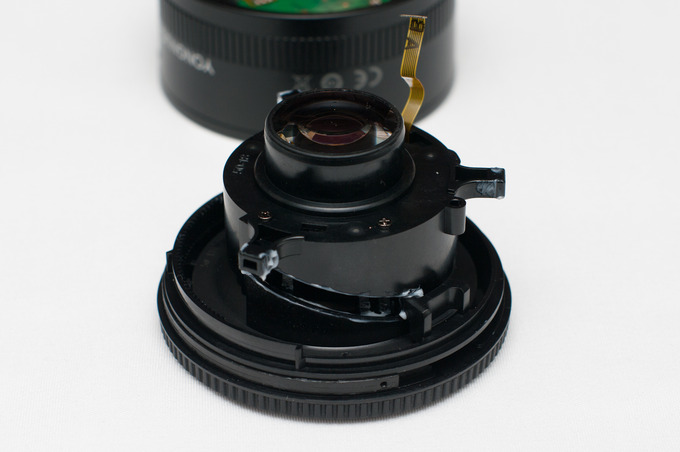 |
In the case of the Yongnuo the optical system is contained in one part and everything is screwed together, not pushed in. There is a lot of silicone grease everywhere – it’s a real miracle that it hasn’t polluted the elements. The focusing is performed like in the Canon.
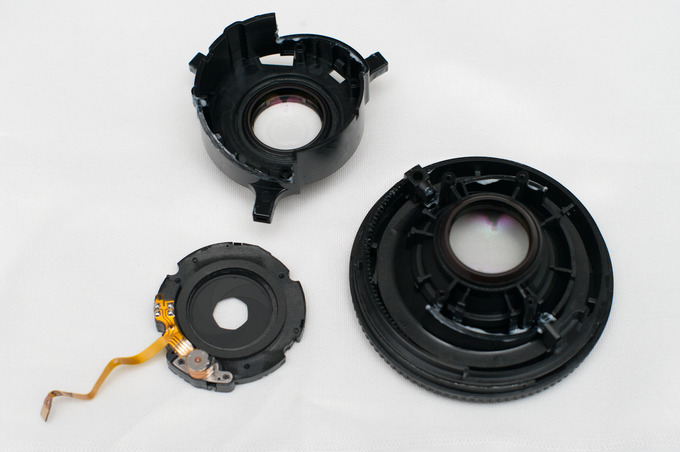 |
After disassembling the lens you also see two parts of the optical system but the aperture is a separate component. The lenses are set in the same way – pushed in and glued to the plastics.
The front and the back element sets of both lenses have very similar optical powers. You can say those two constructions are like twins; still taking into account the differences in optical parameters you can assume the Chinese lens was constructed anew and/or different glass elements were used in its production process (which, of course, changes a bit the original Canon project).
Yongnuo company didn’t provide precise information concerning the quality of used glass but we know that its lens, like the Canon, consists of 6 elements positioned in 5 groups. Inside you also find an aperture with seven blades (two more than the Canon’s aperture has), which can be closed down to f/22. Unfortunately the aperture had a tendency to jam at the previous position. It happened quite randomly and as a result the photos didn’t have the right exposition.
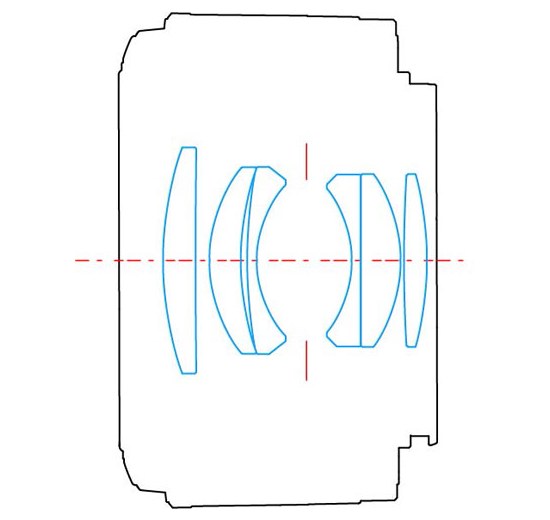 |
Precise measurements of the lens’s parameters show that it is not the Canon’s twin. Let’s remind here that the Canon had 51.5 mm focal length and the f/1.86 aperture. The Yongnuo has 50 mm focal length (with the measurement error amounting to 0.37 mm) and f/1.82 aperture. It is clear the lenses differ not only in outer and inner parts of their casings but also in the optical construction. The difference in focal length seems perhaps not huge but it remains noticeable. The angle of view of the Yongnuo is bigger; we didn’t have any problems with noticing it e.g. by taking photos of our distortion or resolution testing chart. The Canon was created as a bit smaller lens which, originally, was assumed to be lightweight, cheap and hardly ever serviced if serviced at all. The Yongnuo is a device easier to disassemble and to service. Its construction is not as “disposable” as that of the Canon but it’s hard to say whether it is an advantage or a flaw – after all both lenses are made of equally flimsy plastics.
Like in the case of the Canon 1.8/50 II with the Yongnuo you get just two caps in the box– a very modest accessory kit.
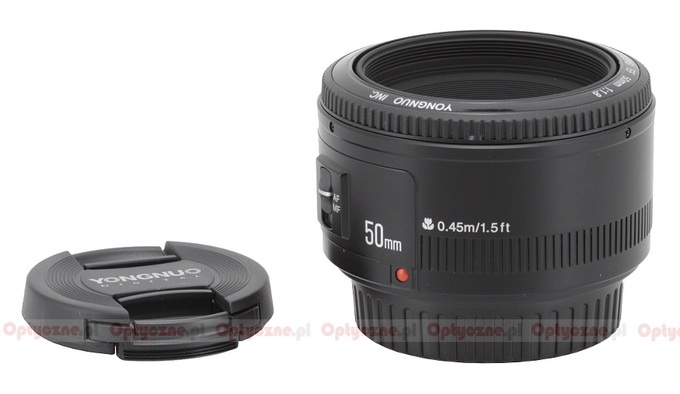 |






